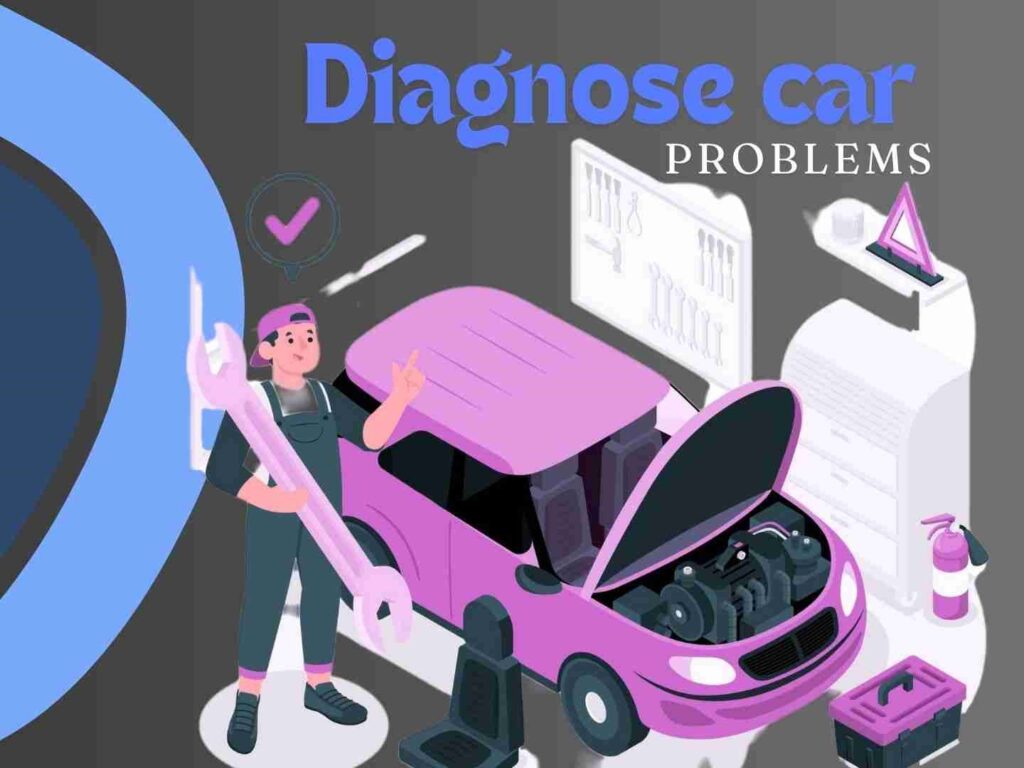विषय सूची
How to Diagnose car problems
When your car experiences electrical issues, it can be a challenging task to diagnose the root cause. However, with the right approach and a systematic method, you can effectively identify and resolve the problem. This guide provides a detailed process to diagnose electrical problems in your car, ensuring that you can pinpoint the issue accurately and efficiently.

Understanding the Basics of Car Electrical Systems
To diagnose electrical issues, it is crucial to have a foundational understanding of the car’s electrical system. The electrical system comprises various components, including the battery, alternator, starter, and wiring. These components work together to ensure that your vehicle operates smoothly.
Key Components of the Electrical System
- Battery: The primary power source for the vehicle.
- Alternator: Charges the battery and powers the electrical system when the engine is running.
- Starter: Initiates the engine’s operation.
- Wiring and Fuses: Distribute electrical power throughout the vehicle.
Step-by-Step Process to Diagnose car Problems
1. Check the Battery
The battery is often the first suspect when dealing with electrical issues. Begin by inspecting the battery terminals for corrosion or loose connections.
- Battery Voltage: Use a multimeter to check the voltage. A healthy battery should read around 12.6 volts when the engine is off. If the voltage is below 12 volts, the battery may be weak or dead.
- Load Test: Perform a load test to ensure the battery can maintain adequate voltage under load.
2. Inspect the Alternator
If the battery is in good condition, the next step is to examine the alternator. The alternator plays a crucial role in keeping the battery charged and supplying power to the electrical system.
- Alternator Output: Check the alternator’s output using a multimeter. A functional alternator should produce between 13.5 and 14.5 volts.
- Belt Tension: Ensure that the alternator belt is properly tensioned and in good condition. A loose or worn belt can cause charging issues.
3. Examine the Starter
The starter is responsible for cranking the engine. If your vehicle struggles to start, the starter could be the culprit.
- Starter Relay: Test the starter relay to ensure it is functioning correctly.
- Voltage Drop Test: Perform a voltage drop test on the starter circuit to identify any excessive resistance.
4. Check the Fuses and Relays
Blown fuses or faulty relays can cause various electrical issues. Inspect all the fuses and relays in your vehicle’s fuse box.
- Fuse Inspection: Check for any blown fuses and replace them as necessary.
- Relay Functionality: Test the relays to ensure they are operating correctly.
5. Inspect the Wiring
Damaged or corroded wiring can lead to electrical problems. A thorough inspection of the wiring is essential.
- Visual Inspection: Look for signs of wear, corrosion, or damage to the wiring.
- Continuity Test: Use a multimeter to check the continuity of the wires, ensuring there are no breaks or shorts.
6. Test the Ground Connections
Poor ground connections can cause a variety of electrical issues. Ensure all ground connections are clean and secure.
- Ground Resistance: Test the resistance of the ground connections using a multimeter. A good ground should have minimal resistance.
- Cleaning: Clean any corroded ground connections to ensure a solid electrical connection.
7. Examine the Ignition System
The ignition system is responsible for starting the engine. Issues with the ignition switch or coil can prevent the car from starting.
- Ignition Coil: Test the ignition coil for proper resistance and output.
- Ignition Switch: Check the ignition switch for any signs of wear or malfunction.
Common Electrical Problems and Solutions
1. Car Won’t Start
- Possible Causes: Dead battery, faulty starter, or ignition switch issues.
- Solution: Check the battery voltage, inspect the starter and ignition system, and ensure all connections are secure.
2. Battery Not Charging
- Possible Causes: Faulty alternator, broken belt, or wiring issues.
- Solution: Test the alternator output, inspect the belt, and check the wiring for any faults.
3. Electrical Accessories Not Working
- Possible Causes: Blown fuse, faulty relay, or wiring issues.
- Solution: Replace any blown fuses, test the relays, and inspect the wiring for damage.
4. Dim or Flickering Lights
- Possible Causes: Weak battery, faulty alternator, or poor ground connections.
- Solution: Check the battery and alternator, and ensure all ground connections are clean and secure.
Diagnosing electrical problems in your car requires a methodical approach and a solid understanding of the vehicle’s electrical system. By following this guide and systematically checking each component, you can effectively identify and resolve electrical issues, ensuring your car remains reliable and safe on the road.